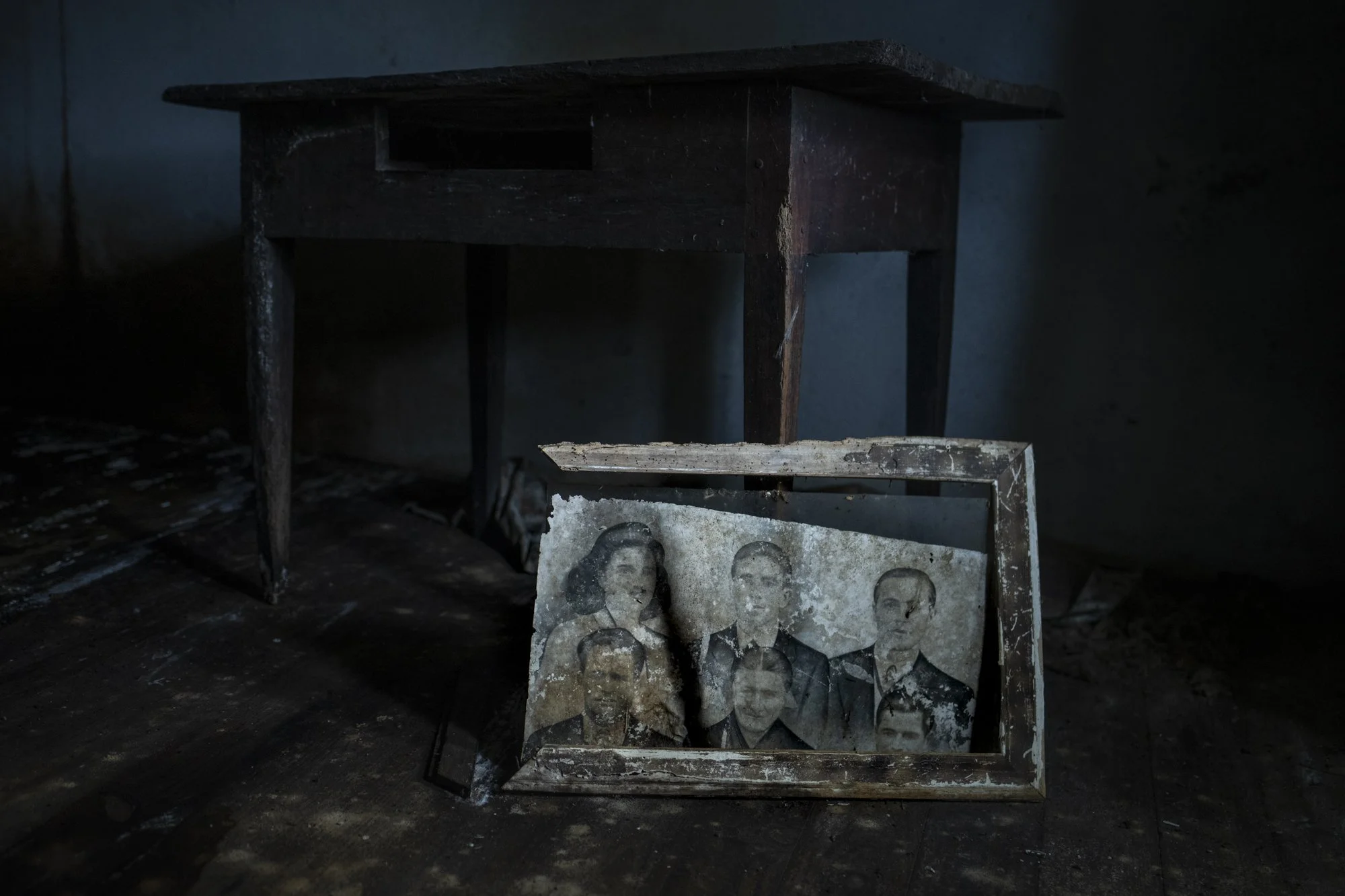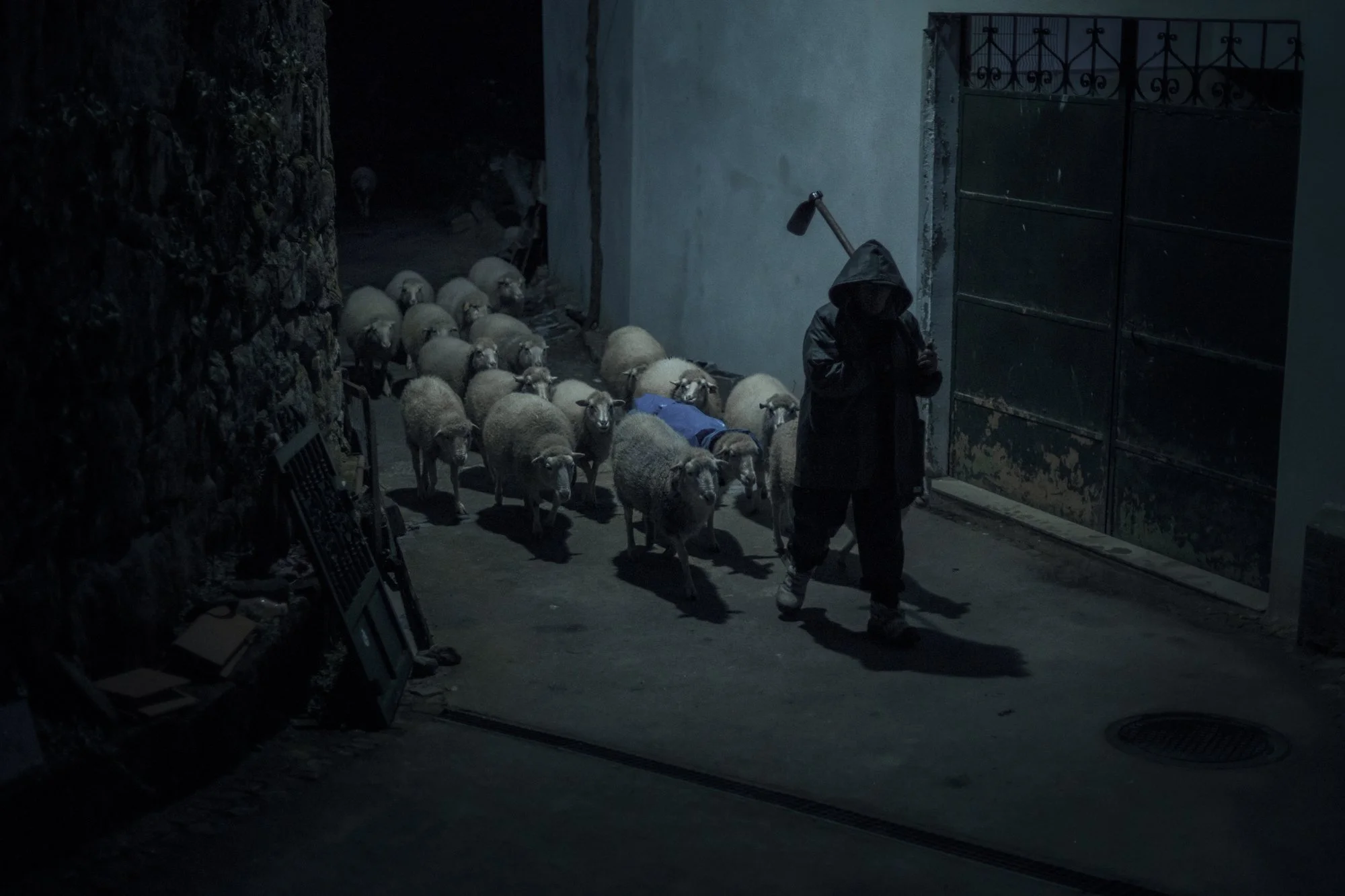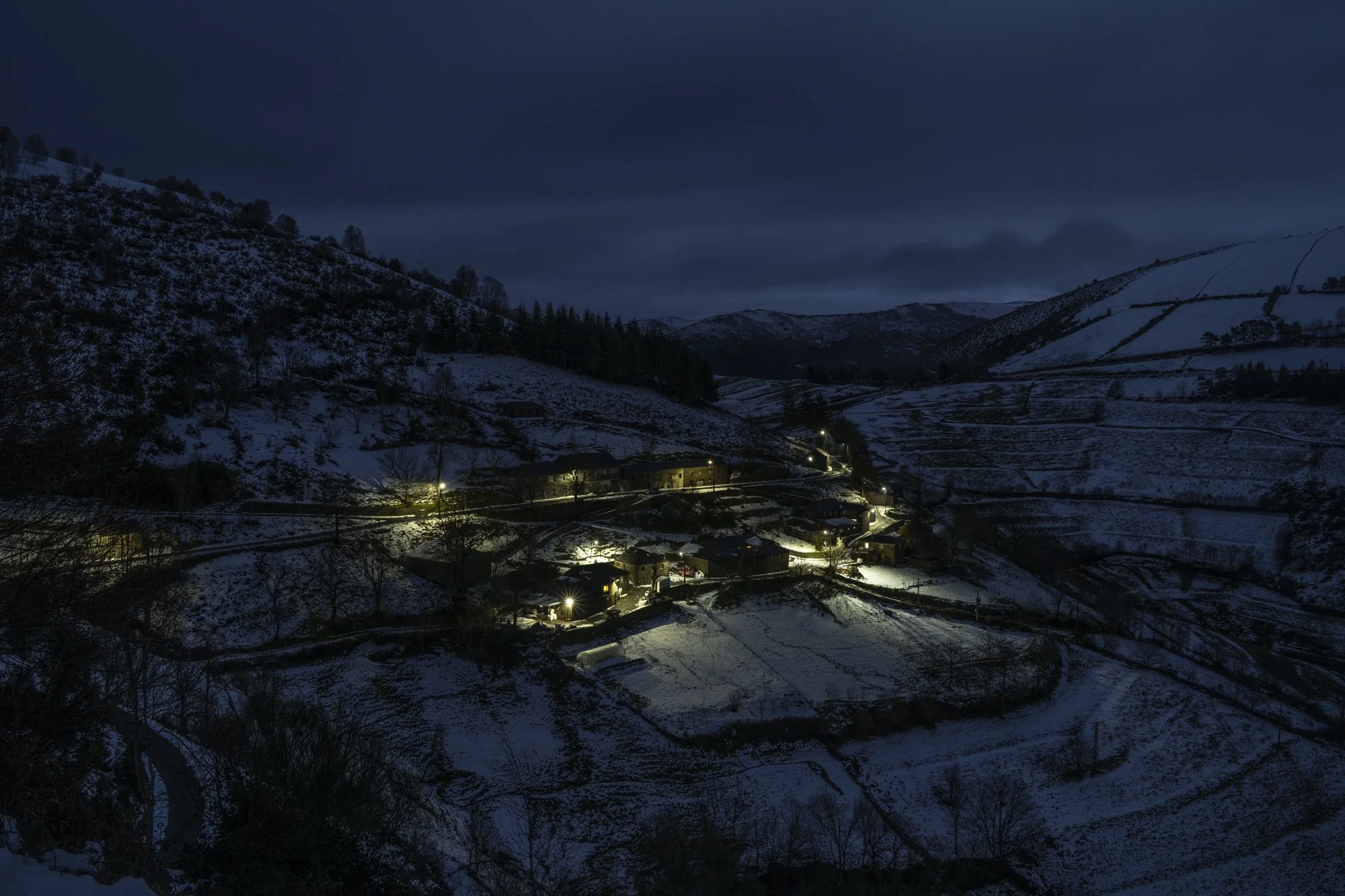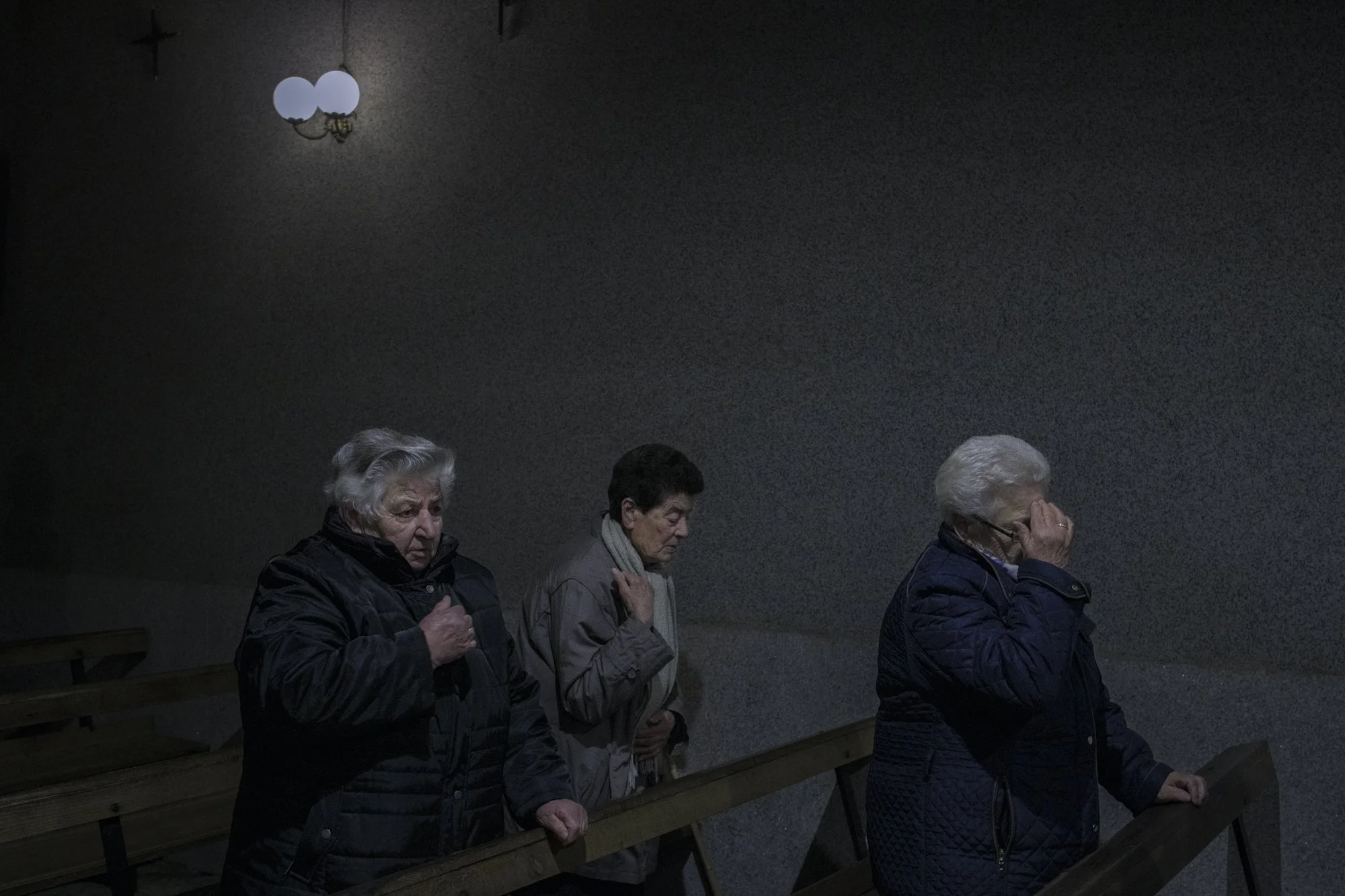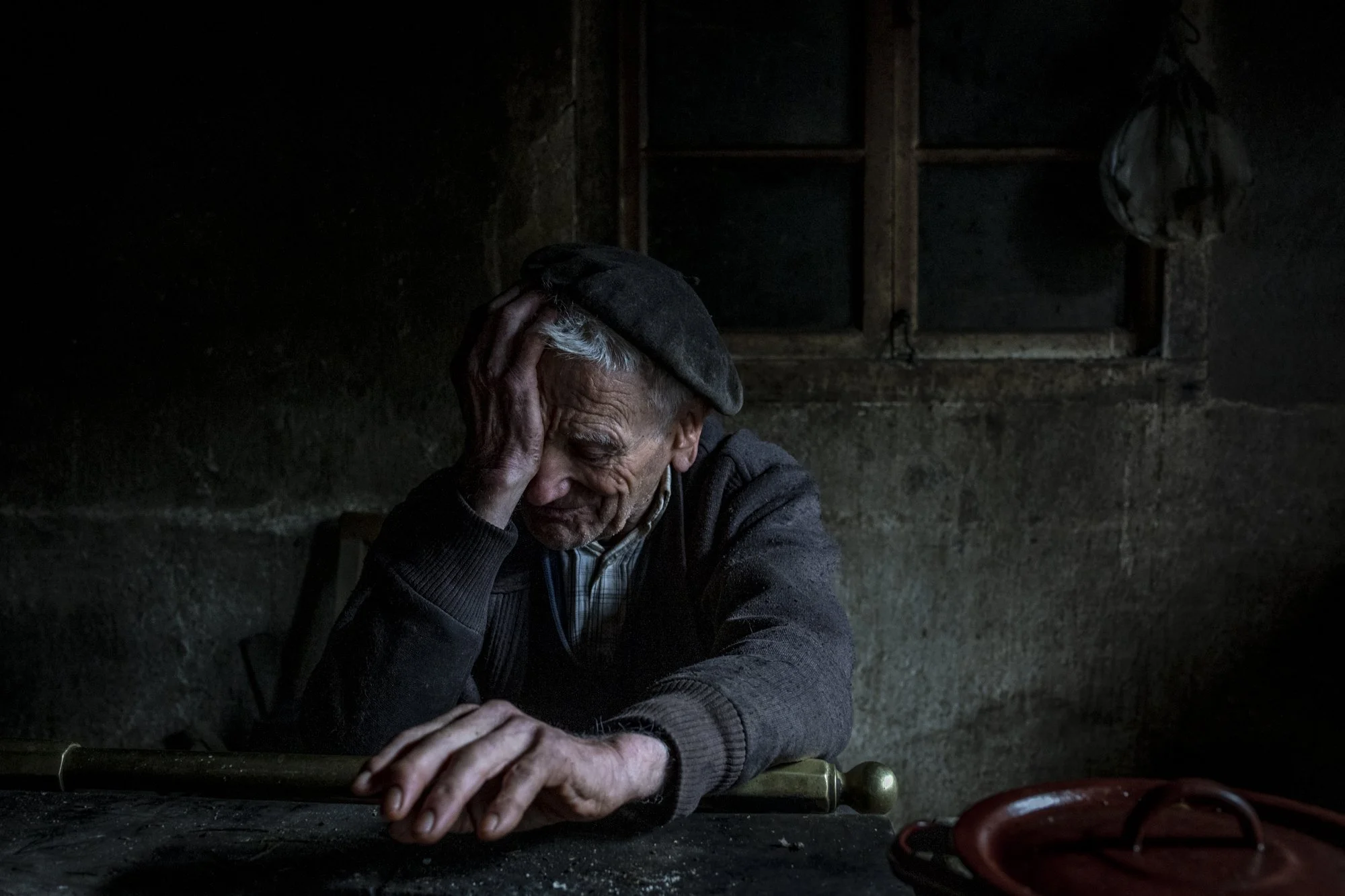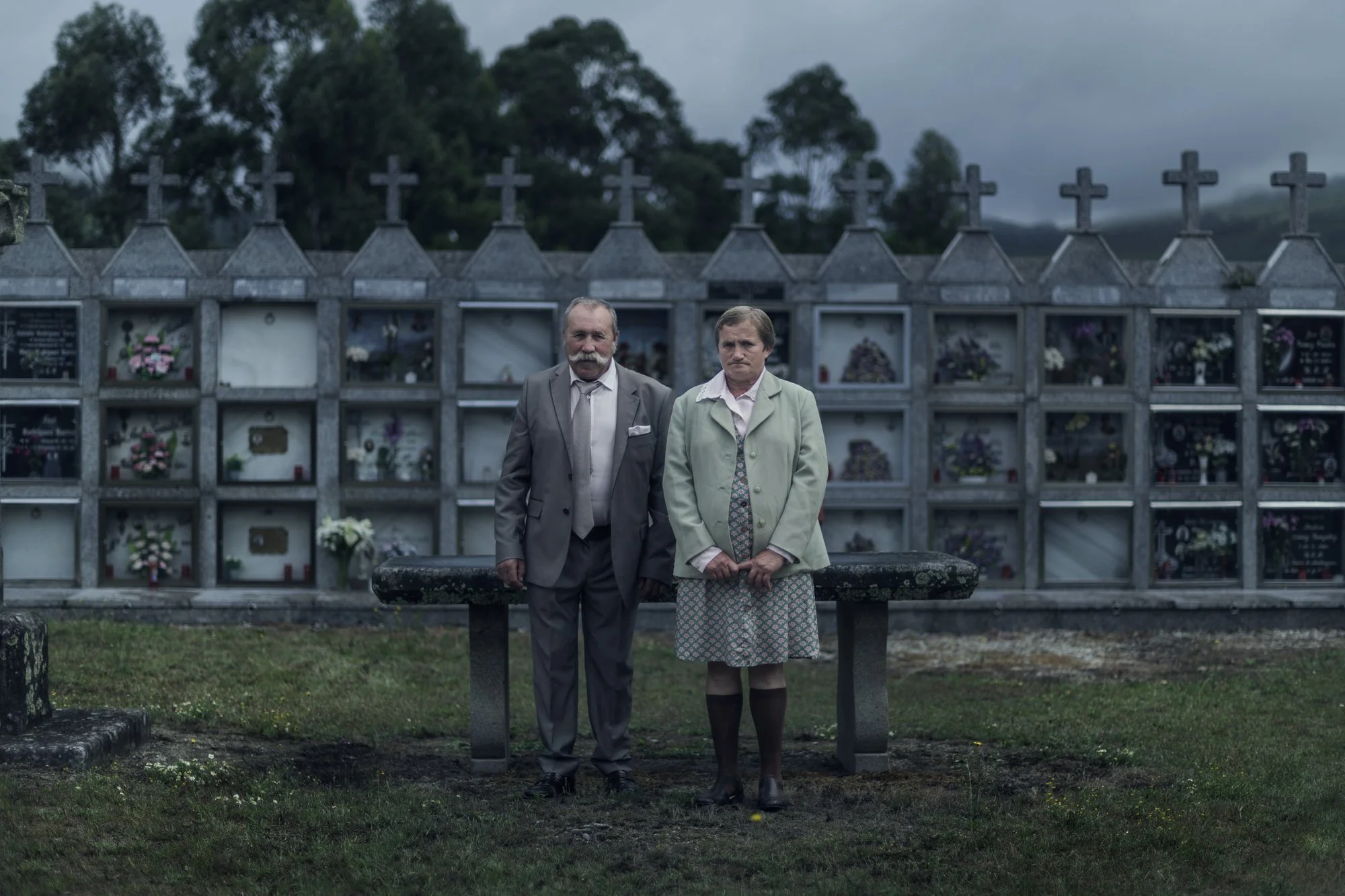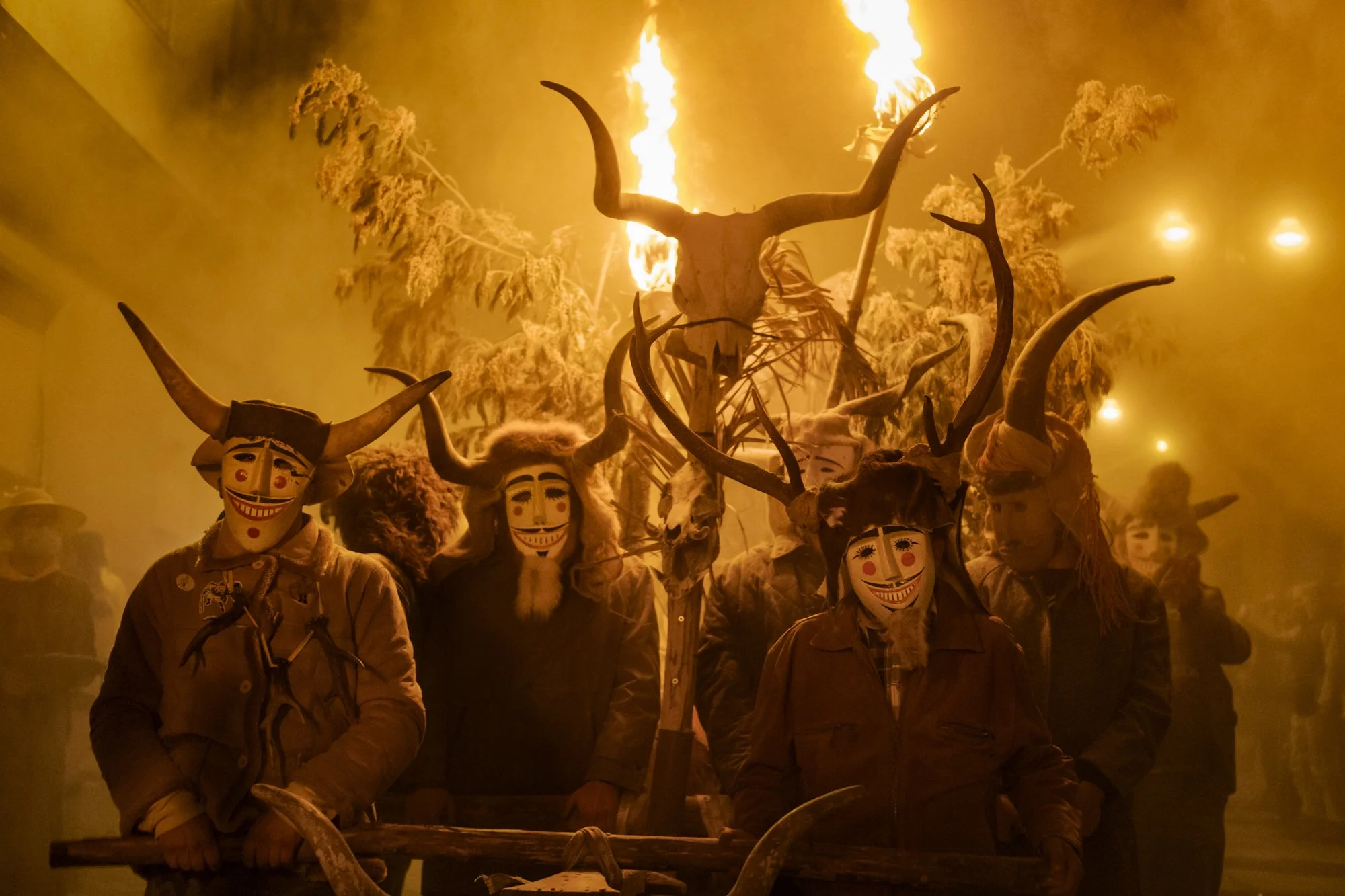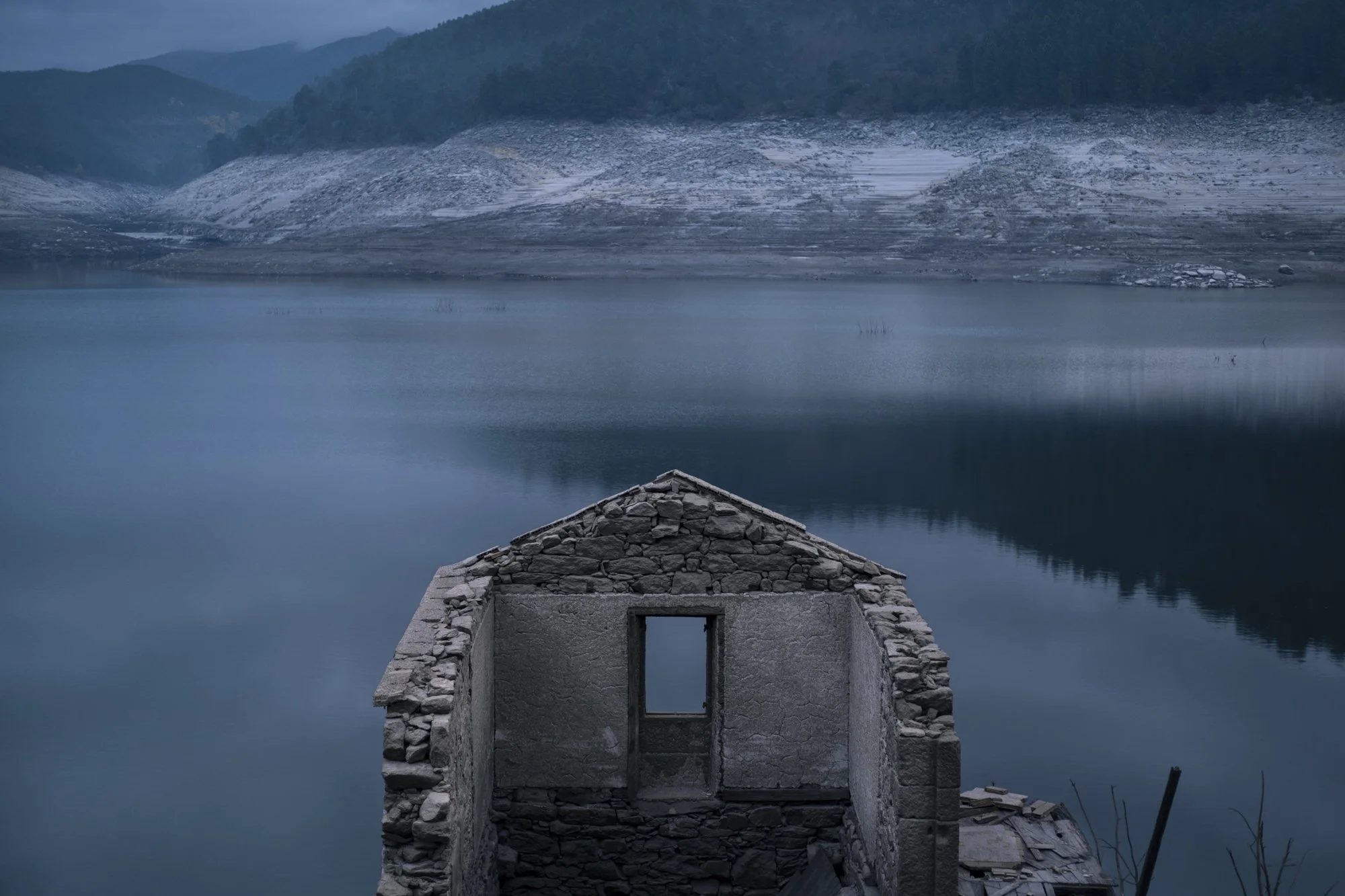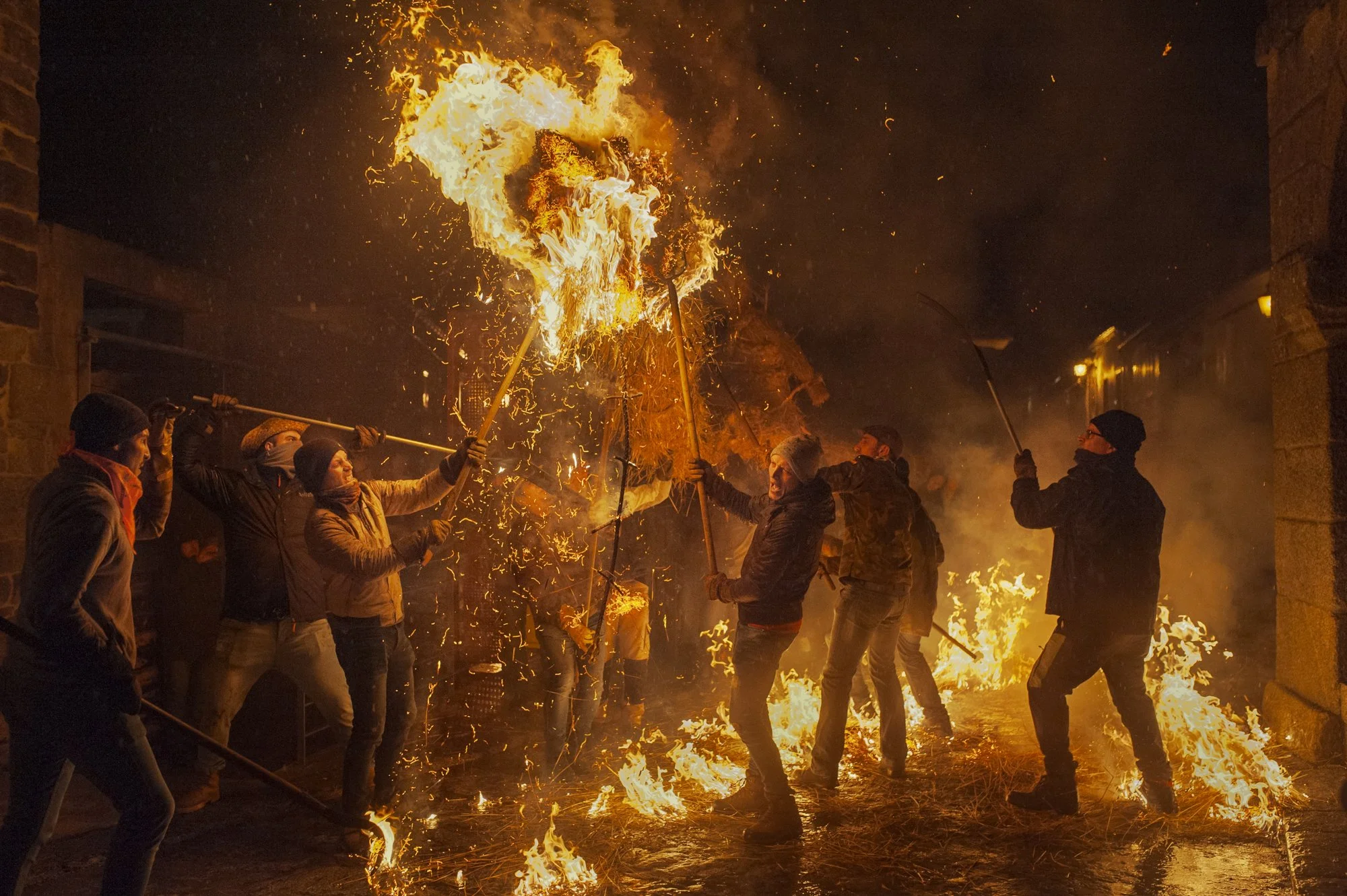PHOTO CONFESSIONAL: Brais Lorenzo
A dog walks along a lonely road during a snowy day in Montederramo, Ourense, northwestern Spain. In some parts of rural Galicia it is difficult to meet people, and some scientific studies indicate that isolation can cause mental disorders.
IF YOU WEREN’T A PHOTOGRAPHER, WHAT OTHER PROFESSION WOULD YOU PICK?
Something related to humanitarian issues. A profession where I could feel useful by helping others and that would allow me to travel and discover the world. There was a time when I was also drawn to becoming a firefighter, but photography crossed my path.
Out of the 62,026 population entities in Spain, 30,454 are located in Galicia. Nearly 2,000 villages in the region are already uninhabited—a historic record that represents a third more than a decade ago, according to the Galician Institute of Statistics. The various waves of migration throughout history have brought significant changes to Galicia and were key in shaping the Galician people. From the late 18th century through the early 20th, rapid population growth fueled the expansion of cities. It was the rural working classes who were forced to seek their future through emigration, whether across the Atlantic or via internal migration to other parts of Galicia, Spain, or Europe. It is estimated that up to two million Galicians left the region in the 19th century. During the Franco regime, between 1950 and 1975, nearly half a million people departed. When a village dies, a light also goes out in the collective memory of a people. In the images, emptiness settles heavily in a home of Ourol (Lugo), where life once had names and presence.
WHAT HAS BEEN THE MOST CRUCIAL DECISION YOU HAVE MADE IN YOUR CAREER’s DEVELOPMENT?
I guess committing seriously to the path of photojournalism. It’s not an easy road.
José Pérez in the village of Puxedo, Lobios, Ourense, northwestern Spain, walking down a dark street with their sheep. "The farm doesn't give anything, I have it because I've had it all my life". The progressive loss of importance experienced by the primary sector has much to do with the culture of smallholdings and a complicated orography to develop the current model of intensive production, which feeds the insatiable market of macro-production and overproduction.
HOW IMPORTANT IS RESEARCH IN YOUR WORK?
In photojournalism, being well informed is essential—you need to anticipate events and propose topics. In documentary photography, it's even more crucial to understand reality in depth in order to raise questions for the viewer and offer some context.
The villages of Degrada and Cabanas Antigas, located in the municipality of Cervantes (Lugo), lie at the foot of the Galician slope of the Ancares mountains, at around 1,200 meters above sea level. A lack of services and infrastructure coexists with a growing influx of tourism. While the dwindling local population demands greater institutional support to counter isolation, visitors from urban areas come to the region in search of idyllic mountain landscapes and a chance to “disconnect” from city life. Beyond tourism, several locally rooted projects have flourished in recent years. One example is livestock farming, which still draws on the tradition of transhumance that continues to be practiced in the mountains. The extensive use of grazing land for cattle, combined with a cooperative model adapted to today’s market demands, provides employment for hundreds of families in the area and helps prevent environmental issues such as forest fires.
IS THERE A PHOTOGRAPHER/ARTIST WHO IS A CONSTANT REFERENCE FOR YOU?
I’ve learned a lot from photographers I’ve had around me and from all kinds of photographic disciplines. Also, of course, from the classics: W. Eugene Smith, Koudelka, Robert Frank, Dorothea Lange…
Several parishioners pray during the celebration of a mass in the church of San Bartolomeu de Baldriz, Cualedro, Ourense, northwestern Spain. The crisis of faith causes difficulties in relieving the older parish priests, who are forced to travel through the parishes until very old age. When rural priests retire or die, some churches close and are left unattended. This situation causes the faithful to lose the temple to go to and have to travel many kilometers if they want to attend a church.
WHAT WOULD YOU NOT WANT TO PHOTOGRAPH?
I don't think I have red lines. I wish wars, climate crises, or migration flows didn’t exist, but the world is also a hostile place and it’s our responsibility to document it.
Mari Paz González, 62, tends to her animals in San Xoán de Río (Ourense). For a long time, it was common in Galicia for every household to have a few cows. That livestock was part of a subsistence economy that, through great effort, helped entire families get by. Today, times have changed: making a living from the primary sector is no longer possible with just a few animals—profitability now demands more livestock, more pace, more production. The connection to the land now follows different paths and plays by different rules.
WHAT EQUIPMENT DO YOU USE, AND WHAT IMPORTANCE DO YOU GIVE TO TECHNIQUE?
I’m a Nikon person because there was an analog F70 at home when I started. I use the Nikon Z9 and Z8, always with prime lenses.
A lamb pokes its snout through the crack of an old door in a village in Cualedro, Ourense, northwest Spain. This image could be a metaphor for the situation in rural Galicia. Many times, it wants to breathe but cannot; it is not allowed to.
WHAT IS THE STARTING POINT OF YOUR CREATIVE PROCESS?
Interest in a topic where I feel I have something to contribute and one I’d like to bring into the media spotlight.
Domingo is almost 90 years old and lives alone in Noceda, in A Fonsagrada, Lugo, in the northwest of Spain. Until recently, he was still using an ox cart that he had made himself. "This was like a desert. There were no roads, there was nothing. I didn’t get married and I stayed here. Now, being alone, you see..." he recalls. A Fonsagrada is the largest municipality in Galicia, with more than 438 km². It has more area than countries like Malta or Liechtenstein. Located in a very mountainous region, it has 600 kilometers of roads, most of which are narrow and winding. In this part of Galicia, the issue of distances is evident, making access to basic services like grocery stores and other types of establishments difficult.
HOW DO YOU DEFINE YOUR PHOTOGRAPHY WITH a #tag
Photojournalism and documentary. Although, to be honest, I find labels boring.
In Piornedo, Lugo, northwest of Spain, a village of about 25 inhabitants, the palloza of Casa Perdigón leads a project aimed at preserving these types of Galician constructions, classified as Assets of Cultural Interest (BIC). In response to the residents' complaints about the lack of public resources for its maintenance, the Teitos de Piornedo association, created a few years ago by a group of local women, works on cultivating rye to preserve the traditional thatched roofs and learn how to restore these coverings. Projects and popular initiatives to make maintenance, innovation, and life possible in a void full of hope.
at what point did you feel you were a photographer, and what made you think that way?
Since I started studying photography and immersing myself in the history of the classics, I felt this was my path too.
José Gonzalo, 67, and Inés Grova, 57, pose for a photograph in a cemetery during the Romería de los Ataúdes (Procession of Coffins) of Santa Marta de Ribarteme, in As Neves, Pontevedra, in the northwest of Spain. The celebration of this rite, of uncertain origins, commemorates the victory of life over death and is often associated with the poverty and isolation of rural villages. It is held every July 29th in San José de Ribarteme, a small village of 200 inhabitants that on that day attracts numerous pilgrims and tourists, interested in witnessing this unique mix of tradition, spirituality, and popular culture. Devotees who have survived life-threatening situations are carried in procession —inside coffins— by their family and friends. Despite attempts to ban it due to religious controversy, this funeral-themed pilgrimage still endures.
HOW DO YOU DEAL WITH REJECTION?
It’s part of the game, and there’s always something to learn from it.
Maruja Rodríguez, 76, stands in front of the flames of a forest fire near to the village of Toubes in municipality of San Cristovo de Cea, Ourense, northwestern Spain. Forest fires that happened at night are more difficult to control due to the impossibility of action by the aerial means.
HOW DO YOU THINK YOU HAVE ACCOMPLISHED SUCH SUCCESS?
Success is a relative and very personal concept. We've been taught a distorted idea of success, tied to our careers or income level. To me, success is those moments of happiness you get to share with the people you love.
The Entroido (carnival) is one of the most ancient and emblematic rites of Galicia. Despite having become popular throughout the region as a festivity, there is a very deep connection between this celebration and the rural life of the villages, where it is regarded as a ritual and a reclamation of the origins. There was a time when practically no Galician village existed without its Entroido. For our ancestors, it was a key moment of the year. It marked the end of the harsh and long winter and heralded the arrival of rebirth with the spring. Galician rural life, defined by work on the land, found in the Entroido an escape route and a space for creativity, satire, and the transgression of social norms. The Entroido was created and preserved over time primarily by livestock and farming communities. The key reference was the solar cycle, so ways of life were adapted to the productive periods.
HOW DO YOU APPROACH STRANGERS IN YOUR PROJECTS OR TO INCLUDE IN YOUR PROJECTS?
With a lot of respect and trying to leave my prejudices aside. More and more I understand that nothing is black and white. Everything has nuance, and empathy is essential when approaching people and their realities.
View of a house in the old village of Aceredo, in Lobios, Ourense, northwest of Spain, that was buried in the nineties by the waters of the Lindoso reservoir and that re-emerged due to the emptying of the reservoir and the drought. The reservoir construction project was born of an agreement between the Franco and Salazar dictatorships and was executed decades later (1992), wiped off the map the houses of four villages. The dictator Franco persistently mistreated the rural areas. He encouraged a great exodus and made the imbalances between the countryside and the city insurmountable. His fever to build reservoirs that served to supply water and electricity to the big cities put an end to a way of life. Families like those of Aceredo were forced to abandon their homes and leave their businesses.
IS IT COMMON FOR YOU TO QUESTION YOURSELF OR YOUR PHOTOGRAPHY?
Absolutely. For instance, part of the reason I do certain stories is also selfish—to understand what’s happening firsthand. I also love to travel, and many times I ask myself if it's really necessary for me to fly somewhere to document a story when there are local people who understand that reality better. It’s complex, but I believe we should question everything, all the time.
Like many traditions related to fire, the 'Festa dos Fachós' of Castro Caldelas (Ourense) has a pagan origin. The first written reference appears in the year 1763. It is a celebration of ritual character that has survived to the present day. It began as a small celebration of the neighbours of the village and since then it has been enjoyed uninterruptedly; it has become one of the most significant traditions of fire worship in Galicia.
how is your approach to the art world/ photo-book world?
All forms of art are essential for our personal and professional growth. I haven’t explored the photobook world much beyond buying some—many of which I don’t even open for months. It’s a way to create something lasting, with a thoughtful narrative and visual language. But I also sense a certain elitism and moral superiority in that part of the industry, and I don’t like that. Many people make photobooks just to satisfy their ego. There’s a lot of ego in the photography world.
A wild horse stands in front of wind turbines in a wind farm in Muras, Lugo, in the northwest of Spain. The municipality of Muras, with a population of 600 residents, has the highest number of wind turbines in Galicia. It hosts 20 wind farms and a total of 381 turbines distributed across its entire territory.
WHAT WOULD YOU SAY TO A NEW PHOTOGRAPHER WHO IS JUST STARTING OUT?
Never lose your passion. It’s a tough path, but the best job in the world.
Tronceda, in Castro Caldelas, Ourense, in the northwest of Spain, is a beacon of hope. The village, which was reborn after being forgotten due to the exodus of the 1950s, is now coming back to life with new residents. Thirty years ago, the first settlers placed their dreams and life aspirations in these lands. Since then, little by little, the village has welcomed new neighbors, and today nearly 30 souls give it life. Andrée Philipe was born on the distant French island of Réunion (east of Madagascar). He was a legionnaire and bore the weight of witnessing the most brutal atrocities, being a witness to war and the deep darkness that dwells within humanity. In Tronceda, he found peace among his goats, and for the past 13 years, he has enjoyed the tranquility and serenity of the place.
ABOUT brais lorenzo
Trained in Photography, Geography, and History, he has a strong interest in social and environmental issues and firmly believes in the transformative power of images.
Since 2010, he has combined photojournalism with long-term documentary projects. He is a regular contributor to Bloomberg, AFP, and Agencia EFE, and his photographs have been featured in leading national media such as El País, El Mundo, La Vanguardia, RTVE, Eldiario.es, Revista Luzes, and XL Semanal. His work has also been published in major international outlets, including The Guardian, The New York Times, The Wall Street Journal, The Washington Post, and Time.
His work has received national and international recognition, earning awards such as POYi, the Sony World Photography Awards, the Istanbul Photo Awards, the Siena International Photo Awards, Estaçao Imagem, and the Ortega y Gasset Award, among others.
portrait by óscar pinal


